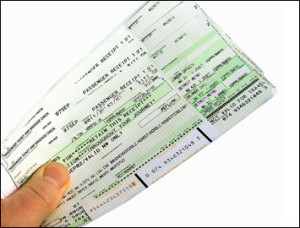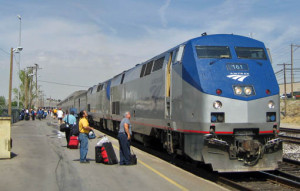Shop for fares carefully, but don’t try to figure them out.
Airline and rail fares, and how they’re calculated, have always been a mystery to me. Of course, I realize that it’s usually a case of supply-and-demand. When fares go up, it’s because there are more people wanting fewer available seats. We may not like it, but at least it makes sense.
 I’ve just begun making some travel plans for attending the NARP* meetings next October in Milwaukee. A few minutes ago, I went to the American Airlines web site to check on flights back here to Maui from Los Angeles. The lowest economy fare for the day I’d like to fly is listed at $1240. Hawaiian Airlines also has a couple of flights that day … for $428. When that particular travel day is just a couple of weeks off, I can tell you from years of experience that both airlines will probably be selling economy seats for less than $350. I’d sure like to book my flights now, but that would be crazy. So I’ll have to wait … and keep checking … and keep checking.
I’ve just begun making some travel plans for attending the NARP* meetings next October in Milwaukee. A few minutes ago, I went to the American Airlines web site to check on flights back here to Maui from Los Angeles. The lowest economy fare for the day I’d like to fly is listed at $1240. Hawaiian Airlines also has a couple of flights that day … for $428. When that particular travel day is just a couple of weeks off, I can tell you from years of experience that both airlines will probably be selling economy seats for less than $350. I’d sure like to book my flights now, but that would be crazy. So I’ll have to wait … and keep checking … and keep checking.
 A large part of my itinerary will be on Amtrak, of course. After the NARP meetings conclude, I’ll catch one of the Hiawatha trains from Milwaukee to Chicago and, from there, take the Texas Eagle to San Antonio where it merges with the Sunset Limited. From there, the Eagle and the Sunset, traveling as one long train, head west to Los Angeles.
A large part of my itinerary will be on Amtrak, of course. After the NARP meetings conclude, I’ll catch one of the Hiawatha trains from Milwaukee to Chicago and, from there, take the Texas Eagle to San Antonio where it merges with the Sunset Limited. From there, the Eagle and the Sunset, traveling as one long train, head west to Los Angeles.
If I book my San Antonio-to-Los Angeles leg on the Texas Eagle, the rail fare is $271 and the supplement for a roomette is $448. Total cost – $719.
If I book that same portion of my trip on the Sunset Limited, the rail fare is $138 and the additional charge for the roomette is $224. Total cost – $362.
Go figure!
* National Association of Railroad Passengers



